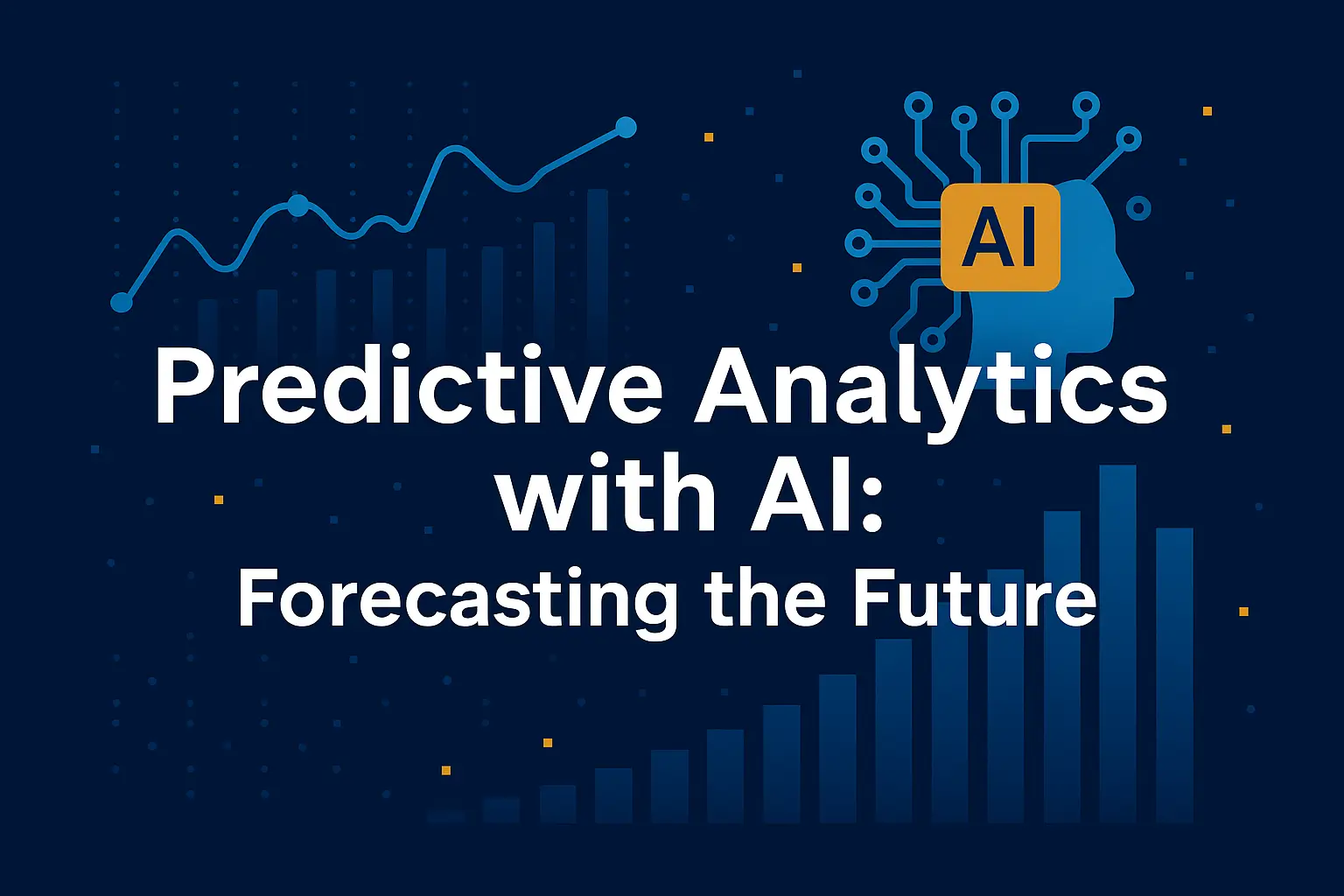Predictive analytics has become a game-changer across industries, helping organizations make informed decisions by analyzing historical data and forecasting future outcomes. At the heart of this capability lies Artificial Intelligence (AI), which takes predictive analytics to a whole new level of speed, scale, and accuracy.
In this article, we’ll explore how predictive analytics works, how AI enhances it, and how businesses are using it to stay one step ahead.
What Is Predictive Analytics?
Predictive analytics is the practice of using data, statistical algorithms, and machine learning techniques to identify the likelihood of future outcomes. It answers questions like:
- Which customers are most likely to churn?
- What will next quarter’s sales look like?
- When might a machine component fail?
AI adds intelligence to these predictions, automating the learning process and refining forecasts over time.
How AI Enhances Predictive Analytics
AI supercharges predictive analytics by enabling systems to:
- Process vast amounts of structured and unstructured data
- Identify hidden patterns that humans might miss
- Adapt and improve with new data inputs
- Deliver real-time, scalable predictions
The combination of machine learning (ML), natural language processing (NLP), and deep learning enables highly dynamic forecasting models.
Key AI Technologies Used:
- Machine Learning Algorithms: Random forests, decision trees, and gradient boosting for accurate predictions
- Neural Networks: Complex pattern recognition in time series or nonlinear data
- Natural Language Processing: Extract insights from text-based sources like reviews or social media
- Computer Vision: Predictive maintenance and inventory tracking through visual data
Step-by-Step: How Predictive Analytics Works
- Data Collection: Historical data from various sources is gathered—sales logs, customer behavior, IoT sensors, etc.
- Data Cleaning and Preparation: Remove inconsistencies, missing values, and format data for analysis.
- Model Selection: Choose or train AI/ML models based on the prediction objective.
- Training and Testing: The model learns from past data and is tested for accuracy.
- Deployment and Monitoring: Once approved, the model is deployed and monitored for performance.
Real-World Applications of Predictive Analytics with AI
1. Marketing and Sales
- Forecast customer lifetime value
- Predict purchasing behavior
- Optimize ad spending and campaigns
- Identify upsell and cross-sell opportunities
Example: E-commerce platforms recommend products based on past purchases and browsing behavior.
2. Finance and Banking
- Detect fraudulent transactions
- Predict loan default risk
- Optimize credit scoring models
- Manage investment portfolios
Example: AI-driven robo-advisors tailor investment strategies based on market predictions.
3. Healthcare
- Predict patient readmissions
- Forecast disease outbreaks
- Personalize treatment plans based on historical data
- Optimize staffing and resource allocation
Example: Hospitals use AI to anticipate high-demand periods and manage patient flow.
4. Manufacturing and Supply Chain
- Forecast product demand
- Predict machine failures and schedule maintenance
- Optimize inventory levels
- Improve delivery timelines
Example: AI predicts when a component in a machine will break down, preventing costly downtime.
5. Human Resources
- Predict employee turnover
- Assess hiring success probabilities
- Monitor performance trends over time
Example: HR tools recommend which applicants are most likely to succeed in a role based on past hiring data.
Benefits of AI-Powered Predictive Analytics
- Increased Accuracy: AI uncovers patterns too complex for traditional analytics.
- Speed and Scalability: Processes massive datasets in real time.
- Cost Savings: Optimizes operations, reduces waste, and prevents failures.
- Competitive Advantage: Helps businesses make proactive, data-driven decisions.
- Improved Customer Experience: Enables more relevant, timely interactions.
Challenges and Considerations
1. Data Quality and Quantity
Poor-quality data leads to inaccurate predictions. Consistent, clean, and comprehensive datasets are essential.
2. Model Interpretability
Complex AI models can be difficult to understand. In sensitive applications (like healthcare or finance), explainability is critical.
3. Privacy and Compliance
Predictive models often use personal data. Businesses must ensure compliance with laws like GDPR and CCPA.
4. Change Management
Employees need training to trust and effectively use AI predictions in decision-making processes.
Getting Started with AI-Driven Predictive Analytics
- Define clear objectives: Know what you want to predict and why.
- Choose the right tools: Platforms like IBM Watson, DataRobot, and Microsoft Azure offer predictive analytics solutions.
- Start small: Pilot with a specific use case before scaling across departments.
- Collaborate with data experts: Data scientists and analysts are key to successful implementation.
- Measure impact: Track ROI through metrics like cost reduction, revenue growth, and time savings.
Final Thoughts: Seeing Tomorrow Today
AI-powered predictive analytics enables businesses to move from reactive decisions to proactive strategies. By harnessing past and present data, organizations can better prepare for the future, improve customer satisfaction, and remain agile in a rapidly changing world.
The future isn’t just something to experience—it’s something you can anticipate and shape, starting now.
